Let’s do an ecommerce comparison between Shopify and BigCommerce, then see which is better for you in terms of online shopping! Both platforms are user-friendly for new users, but depending on your business needs, each has pros and cons of its own.
Ecommerce Comparison Between Shopify and BigCommerce
Both Shopify and BigCommerce are well-known e-commerce systems that support companies of various sizes, from local to international. Despite offering online storefronts, points of sale, online sales channels, customer support, and gift cards, both platforms offer unlimited items, file storage, and bandwidth on all of their plans.
Both include important e-commerce features like basic shipping services, an SSL certificate to secure online payments, and the ability to sell goods through various social media platforms. Although the two platforms are similarly priced, BigCommerce has more integrated features, and Shopify has an app store with more than 8,000 premium and free third-party apps.
BigCommerce has more features, and because those features are more scalable, there is a greater learning curve. Shopify, on the other hand, provides a simpler starting point with the ability to scale by integrating some of the thousands of apps offered in the Shopify app store.
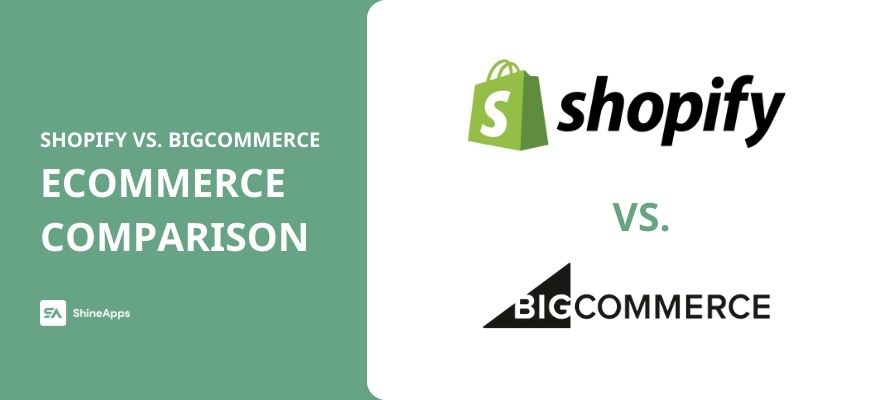
Pros & Cons Between Shopify and BigCommerce
Shopify | BigCommerce | |
Pros |
|
|
Cons |
|
|
Pricing Comparison
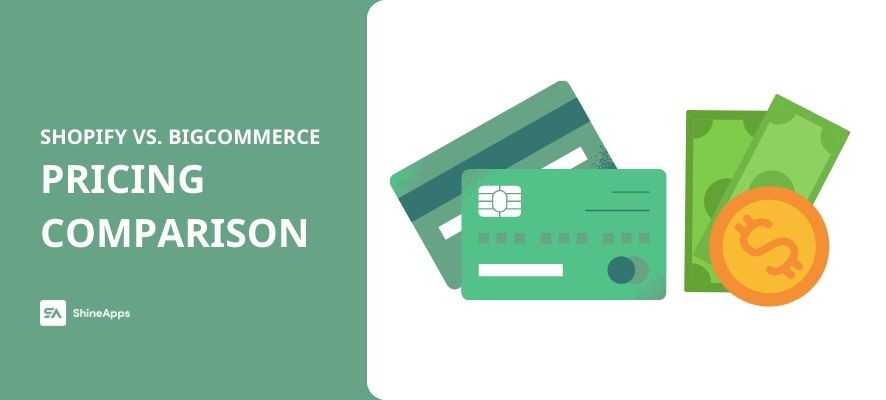
Both platforms have similar prices. Basic Shopify comes with a buy button, an online store with two staff accounts, an online credit card processing cost of 2.9% plus 30 cents, and up to four inventory locations for $39 per month (paid monthly). Similar abilities are offered by the BigCommerce Standard plan for $39 per month (paid monthly), with a limitation on accounts for staff members. When customers do not use Shopify Payments, Shopify levies a 2% transaction fee; BigCommerce does not.
The Big Commerce Plus package, which costs $79 (paid monthly), also comes with extra features to help boost customer conversions, like a stored credit card operation, an abandoned cart saver, and the ability to reward regular customers with programmes of loyalty. Aside from the abandoned cart recovery and discount code features that are already included in Shopify’s Basic plan, its mid-tier plan, which costs $79 per month (paid monthly), also offers five staff accounts, up to five inventory locations, decreased credit card rates, and reduced transaction fees.
In addition to advanced reports, 15 staff accounts, up to eight inventory locations, taxes and import collections for foreign sales, custom pricing by market, and further savings on credit card and transaction fees, advanced Shopify is available for $399 per month (paid monthly). The $399 monthly BigCommerce Pro subscription provides access to Google customer reviews, personalized product filtering, and discounted credit card rates.
Similar to Shopify, BigCommerce requires consumers to upgrade plans based on the annual sales of their online business. BigCommerce Standard is for businesses with annual sales of up to $50,000, Plus is for businesses with annual sales of up to $180,000, and Pro is for businesses with annual sales of up to $400,000.
Shopify provides a Shopify Lite plan for customers who want to sell goods without running an online shop, in addition to the similar three premium plans. The $9 per month Shopify Point of Sale plan enables customers to sell goods in person using a card reader and the Shopify Point of Sale software or to put a Buy Button on their website.
Theme Comparison
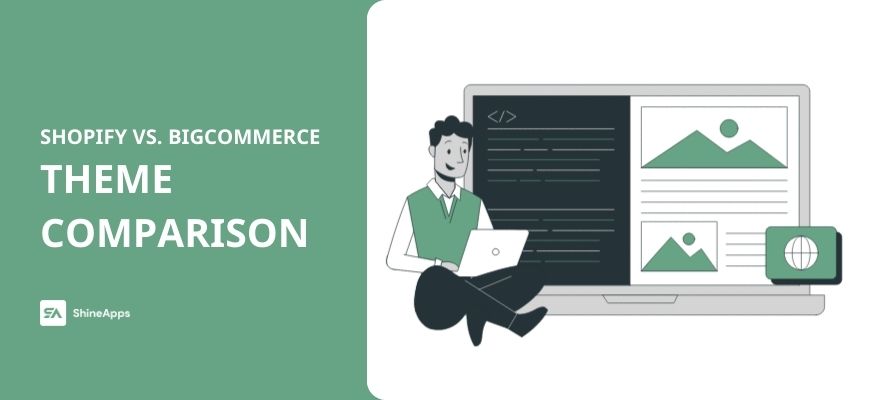
Both BigCommerce and Shopify provide responsive themes. BigCommerce offers 12 free themes, whereas Shopify offers 12 free themes. Each can be altered to fit various industries. More than 70 themes are available on Shopify, with prices ranging from $150 to $350. BigCommerce offers 150 themes for between $150 and $300. Even though both platforms provide responsive, mobile-friendly themes, Shopify has been known for regularly beating competitors in terms of usability and theme design.
Search Engine Optimization Comparison
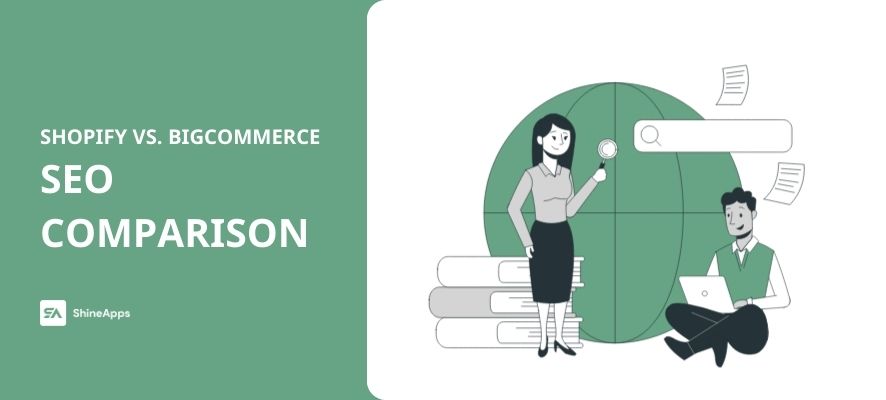
SEO (search engine optimization) is necessary for better outcomes in searches. BigCommerce comes pre-loaded with several SEO tools, including optimized URLs, one-of-a-kind URLs, embedded microdata on product pages, and URL rewrites that automatically change the URL whenever a product is given a new name. Users of Shopify can add keywords, customize meta descriptions and titles, and change blog post URLs.
In comparison to Shopify, which only offers common reporting with its mid-tier plan and advanced reporting with its most expensive plan, BigCommerce includes professional reporting tools in each of its plans. Users of BigCommerce and Shopify can integrate Google Analytics to get more detailed data analysis on how visitors use their websites. BigCommerce performs better out-of-the-box SEO performance, but Shopify has a wider range of third-party apps that can be used for SEO.
Payment Comparison
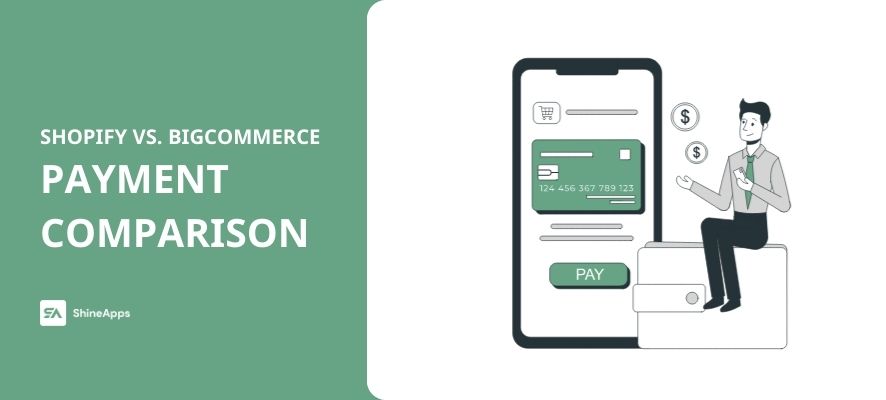
Online buyers are at risk of being distracted. The shopping cart feature in a store needs to be seamless since store owners risk losing potential customers if the checkout process is not quick and simple. For some discount operations, including cart-level discounts, quantity breaks, or part-pricing, and automated discounts for particular customer groups, Shopify depends on third-party apps. Without a third-party app, BigCommerce users can create cart-level discounts, coupon codes, and automated discounts for customers related to customer groups.
While BigCommerce offers 65 pre-integrated online payment options, Shopify offers more than 100 payment providers to support consumers’ preferred payment methods.
In Conclusion
Both platforms let new users create stunning online stores. Shopify is a popular option for beginners because it is simpler to use for actual website creation. The fact that BigCommerce has built-in tools that have a learning curve is one of the factors that makes it such a powerful e-commerce platform. Both of them provide free trials, so test them both out to see which one is ideal for your business.



